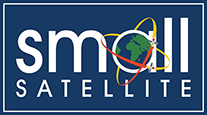Session
Session V: Science Mission Payloads 2 - Research & Academia
Location
Salt Palace Convention Center, Salt Lake City, UT
Abstract
Characterizing the lunar ionosphere and radiation environment is critical for advancing both scientific knowledge and the practical requirements of future lunar missions. This mission proposes deploying dual satellites in lunar orbit to perform radio occultation (RO) measurements and validate the presence and behavior of the lunar ionosphere. By analyzing the phase differences of dual-frequency signals, the electron density can be measured, enabling both temporal analysis and spatial mapping of the lunar ionospheric structure. A thorough understanding of these environmental factors is essential for identifying suitable landing sites, designing resilient infrastructure, and ensuring the reliability of communication and navigation systems—key enablers of sustained lunar exploration and long-term surface habitation. In addition, the system’s inter-satellite ranging capability and GPS-compatible signal formats support precise orbit determination, facilitate collaboration with ground-based positioning systems, and contribute to the development of a potential future Lunar Navigation Satellite System (LNSS), while a custom COTS-based Deep Space Radiation Probe (DSRP) provides in-situ radiation measurements to enhance understanding of the lunar radiation environment.
Document Type
Event
Exploring Lunar Ionosphere Characterization Through Multi-CubeSat Occultation With Ranging Technology and Radiation Environment Analysis
Salt Palace Convention Center, Salt Lake City, UT
Characterizing the lunar ionosphere and radiation environment is critical for advancing both scientific knowledge and the practical requirements of future lunar missions. This mission proposes deploying dual satellites in lunar orbit to perform radio occultation (RO) measurements and validate the presence and behavior of the lunar ionosphere. By analyzing the phase differences of dual-frequency signals, the electron density can be measured, enabling both temporal analysis and spatial mapping of the lunar ionospheric structure. A thorough understanding of these environmental factors is essential for identifying suitable landing sites, designing resilient infrastructure, and ensuring the reliability of communication and navigation systems—key enablers of sustained lunar exploration and long-term surface habitation. In addition, the system’s inter-satellite ranging capability and GPS-compatible signal formats support precise orbit determination, facilitate collaboration with ground-based positioning systems, and contribute to the development of a potential future Lunar Navigation Satellite System (LNSS), while a custom COTS-based Deep Space Radiation Probe (DSRP) provides in-situ radiation measurements to enhance understanding of the lunar radiation environment.


